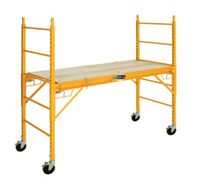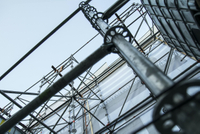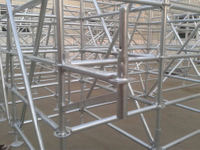Content Menu
● What Is Ringlock Scaffolding?
● Core Components of Ringlock Scaffolding
● Key Factors Influencing Ringlock Scaffolding Costs
>> 1. Project Size & Complexity
>> 2. Material Quality & Types
>> 3. Labor and Assembly Costs
>> 4. Location, Transport, and Accessibility
>> 5. Duration of Use: Rent vs. Buy
>> 6. Safety, Regulations, and Compliance
● Typical Price List for Ringlock Scaffolding (2025)
● Tips To Reduce Ringlock Scaffolding Costs
● Advanced Considerations: Customization and Innovations
● Conclusion
● FAQ
>> 1. What are the main factors affecting ringlock scaffolding cost?
>> 2. How do I calculate the amount of ringlock scaffolding materials needed?
>> 3. Is it better to rent or buy ringlock scaffolding?
>> 4. Are labor costs included in scaffolding cost estimates?
>> 5. How does ringlock scaffolding improve safety and efficiency over traditional systems?
Ringlock scaffolding is a cutting-edge modular scaffolding system used globally in construction, industrial maintenance, shipbuilding, petrochemicals, infrastructure, and event staging. Known for its versatility, quick assembly, and robust safety features, ringlock scaffolding is a preferred solution for projects of all scales. However, understanding what drives the cost of ringlock scaffolding is crucial for contractors, project managers, and procurement specialists striving for cost-efficiency without compromising quality or safety.

What Is Ringlock Scaffolding?
Ringlock scaffolding is a modular system that revolutionizes temporary work platforms. Its core innovation lies in the use of "rosette" nodes at fixed intervals on vertical standards, providing up to eight connection points for ledgers and braces. This design delivers one of the most flexible, safe, and efficient scaffolding structures available.
Ringlock scaffolding systems are common on construction sites for:
- High-rise building construction
- Bridge and infrastructure repair
- Industrial shutdowns and maintenance
- Stadium, event, and entertainment staging
The main benefits are rapid erection/dismantling, high loading capacities, adaptable configurations, and outstanding safety features.
Core Components of Ringlock Scaffolding
A typical ringlock scaffolding structure consists of the following key elements:
- Standards (Vertical posts): Provide height and the backbone of the scaffold.
- Ledgers (Horizontals): Create walkways and working platforms.
- Rosettes (Rings): Welded at regular intervals, these allow for secure and multi-point connections.
- Diagonal Braces: Enhance rigidity and stability.
- Base Jacks & Plates: Ensure leveling on uneven ground.
- Steel Planks & Toe Boards: Form safe walking surfaces and prevent tools from falling.
- Guardrails: Critical for worker safety.
- Transoms & Brackets: For additional platform support and extension.
These components work seamlessly together, giving the system modularity and strength far superior to traditional tube-and-coupler scaffolding.
Key Factors Influencing Ringlock Scaffolding Costs
Ringlock scaffolding costs can vary widely. Accurate price estimation requires careful consideration of several variables, from the size of your project to compliance with local safety regulations.
1. Project Size & Complexity
The scale and scope of your construction project will be the fundamental driver of ringlock scaffolding costs:
- Larger areas require more material and longer assembly times. A skyscraper or large industrial plant project can demand thousands of meters of standards and ledgers.
- Complex shapes or irregular architectures — such as curved facades, overhangs, or bridges — demand more customized components, special fittings, and often more skilled labor to ensure structural integrity.
- Height: Multi-story structures or bridges need taller standards and often require integrated stair towers or ladders, which increase cost.
- Load requirements: Projects with heavy loads or special equipment access require thicker components or additional bracing, increasing material costs.
2. Material Quality & Types
The quality and types of materials used directly impact longevity, safety, and price of ringlock scaffolding:
- High-strength steel (e.g., Q355, Q345B): Standard in heavy-duty scaffolding, offering excellent durability and load-bearing capacity.
- Hot-dip galvanization finish: Increases upfront cost but delivers better corrosion resistance, especially outdoors, extending lifespan and reducing long-term replacement costs.
- Aluminum vs steel: Aluminum ringlock scaffolding offers lighter weight, easing labor burdens, but generally costs significantly more than steel systems.
- Innovative coatings or treatments for powder coating or epoxy finishes can seal surfaces further but add to price.
Choosing the right materials based on environmental exposure, project duration, and safety needs can optimize costs over a system's lifetime.
3. Labor and Assembly Costs
Although ringlock scaffolding simplifies assembly compared to traditional methods, labor remains a significant cost factor:
- Rapid modular assembly: Time-saving design reduces onsite man-hours and associated labor costs.
- Experienced labor force: Skilled workers familiar with ringlock systems minimize downtime, errors, and enhance safety during erection.
- Height and complexity: Projects requiring work at extreme heights or complex geometries may involve more time-consuming or specialized assembly methods.
- Disassembly and relocation: Projects needing scaffolding adjustment or movement during work see increased labor and transport costs.
In many regions, labor rates can account for 25% to over 40% of total scaffolding costs.
4. Location, Transport, and Accessibility
Logistics play a crucial role in the final cost of ringlock scaffolding:
- Remote or difficult access sites mean longer transport times and potentially the need for specialized vehicles or cranes.
- Urban environments might impose delivery restrictions, require permits, or involve traffic management plans.
- Storage facilities: Onsite storage or secured yards impact cost if materials are staged for extended periods.
- Import duties and taxes: International projects should consider customs and VAT that affect the cost of importing scaffolding equipment.
Transportation costs can add 10%-15% or more to the base price.
5. Duration of Use: Rent vs. Buy
Ringlock scaffolding can be purchased outright or rented, with each option suited to different project profiles:
- Renting is cost-effective for short-term projects or when storage space is limited. Rental suppliers typically provide transport, assembly consultations, and maintenance support.
- Buying incurs a larger upfront expense but works well for long-term, repeat, or multiple simultaneous projects. Ownership allows customization and control over equipment condition.
- Resale value: Well-maintained ringlock scaffolding retains market value and can offset initial investment.
Analyzing project timeline and frequency of scaffolding use is critical to selecting the economical option.
6. Safety, Regulations, and Compliance
Meeting legal requirements and industry best practices influences material selection and costs:
- Compliance with OSHA, EN standards, or local codes demands certified materials with traceable quality control.
- Additional safety features such as advanced guardrails, netting, fall arrest systems, and anti-slip surfaces can add cost but improve worker protection significantly.
- Regular inspections and maintenance may require ongoing expense assurance.
- Liability insurance considerations: Using certified ringlock scaffolding helps reduce insurance premiums.
Failing to invest adequately in safety can result in costly fines, work stoppages, or accidents.
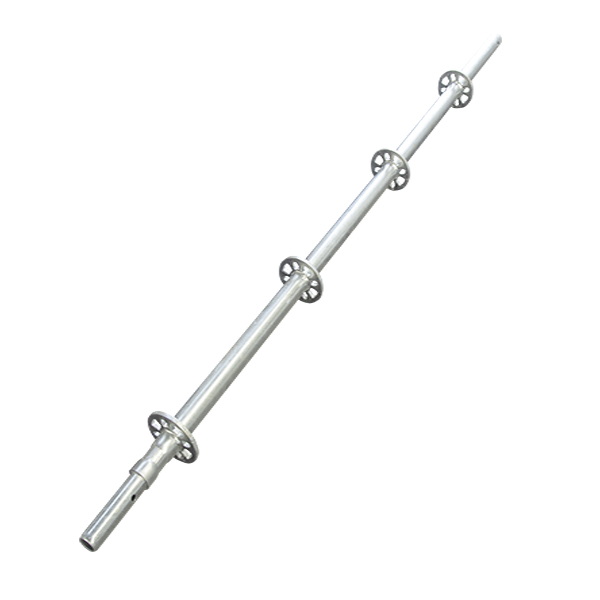
Typical Price List for Ringlock Scaffolding (2025)
Market prices for ringlock scaffolding vary widely depending on source, quality, and regional factors. Here is a general pricing guide (USD per piece, ex-works):
Component | Typical Price Range (USD) |
Standards (Vertical) | $11–$88 |
Ledgers (Horizontals) | $18–$53 |
U-Transoms | $12–$39 |
Base Jacks / Plates | $11–$86 |
Diagonal Braces | $41–$56 |
Steel Planks | $45–$112 |
Aluminum Ladder Decks | $397–$588 |
Toe Boards | $14–$41 |
Clamps & Couplers | $2–$19 |
Prices tend to decrease with bulk orders. Rental rates are roughly 5% to 15% of purchase price per month.
Tips To Reduce Ringlock Scaffolding Costs
- Accurate Project Planning: Precisely measure scaffold coverage to avoid excess materials.
- Select Experienced Suppliers: Trusted companies provide certified components, reducing risk of rework.
- Optimize Assembly Sequence: Minimize scaffold moves and maximize use of reusable sections.
- Use Rental for Short-term Use: Avoid high upfront purchases for one-off projects.
- Invest in Durability: Hot-dipped galvanizing can reduce replacement costs over longer durations.
- Leverage Bulk Purchase Discounts: Combine orders for multiple projects or long timelines wherever possible.
- Train Your Assembly Team: Skilled workers improve speed and safety, reducing both labor and accident costs.
Advanced Considerations: Customization and Innovations
As ringlock scaffolding technology evolves, additional factors may influence cost decisions:
- Custom Adaptations: Some projects require specialized brackets, adjustable base jacks, or bespoke platforms to fit unique site demands — increasing cost.
- Integration with Other Scaffolding Systems: Hybrid systems combining ringlock scaffolding with cantilever or facade scaffolds may be necessary.
- Technological Enhancements: Use of drones, laser scanning, and BIM (Building Information Modeling) for scaffold layout reduces overruns but could add consulting fees.
- Sustainable Materials: Emerging eco-friendly coatings and recycled materials can carry premium pricing.
Project planners should evaluate these innovations based on cost-benefit analyses tailored to their specific site conditions and timelines.
Conclusion
Ringlock scaffolding, with its modular design and rapid assembly, is the gold standard for safety and efficiency in modern construction and industrial workspaces. The price of ringlock scaffolding systems is determined by a convergence of factors: project size, shape, material quality, labor requirements, project location, safety standards, and logistical considerations.
By thoroughly understanding these drivers and working closely with reputable suppliers, project managers and contractors can generate accurate budgets, leverage the substantial productivity advantages of ringlock scaffolding, and maintain optimal safety standards. Quality, compliance, and strategic planning are essential pillars that help minimize overall costs and maximize value across any scaffold-dependent project.
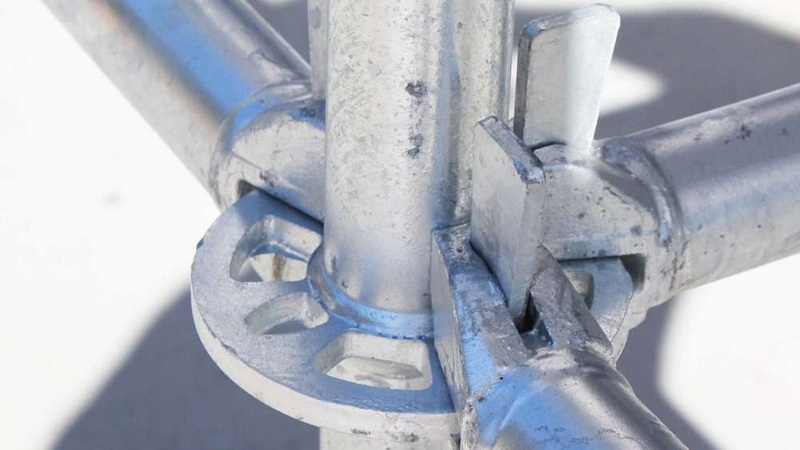
FAQ
1. What are the main factors affecting ringlock scaffolding cost?
The primary factors include project size, complexity, material quality, duration of use, labor costs, and location (including transport complications). Local safety codes, rental versus purchase decisions, and supplier reputations also influence pricing.
2. How do I calculate the amount of ringlock scaffolding materials needed?
Calculate the total scaffolding area and height, break down by standard bay dimensions (usually 0.5 m or 1.0 m module widths/heights), and factor in number of lifts. Adjust quantities for corners, openings, and special architectural features. Many suppliers offer takeoff services based on your project drawings.
3. Is it better to rent or buy ringlock scaffolding?
Renting is preferable for short-term or one-off projects to reduce upfront spending. Buying is economical for long-term, repeat, or multiple simultaneous projects, particularly with the option of reselling later. Decision depends on project duration, frequency, cash flow, and storage capacity.
4. Are labor costs included in scaffolding cost estimates?
Labor costs are often presented separately but can make up 25%-40% of scaffolding expenses depending on site conditions and complexity. Clarify with suppliers if labor, assembly, and dismantling charges are included in quotations.
5. How does ringlock scaffolding improve safety and efficiency over traditional systems?
Ringlock scaffolding uses standardized rosette nodes providing secure multi-point locking, greatly reducing assembly errors. Its modularity enables quick erection and dismantling, integrated safety features like guardrails and toe boards, and it's designed to handle heavy loads safely, enhancing overall jobsite productivity and worker protection.













